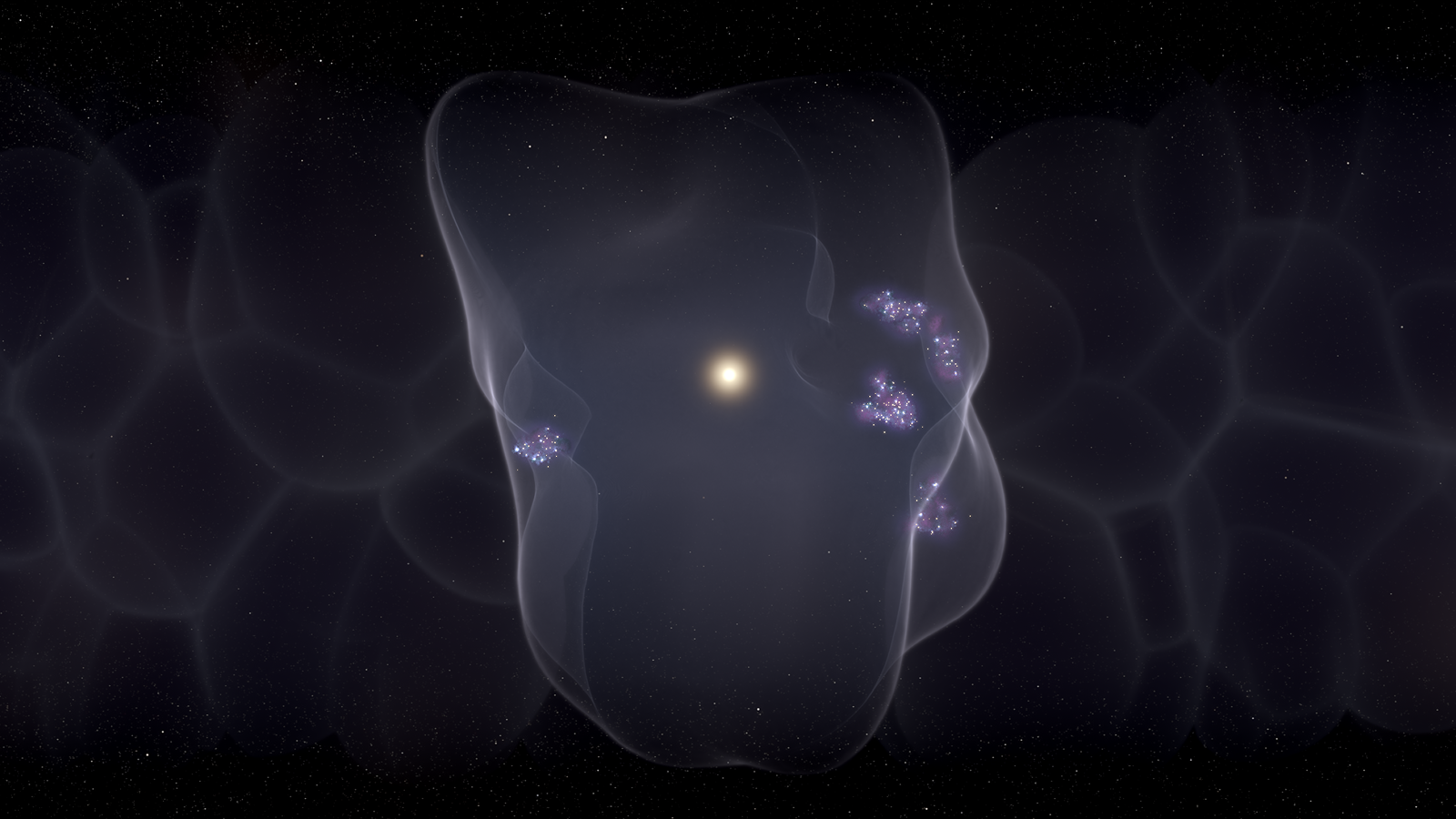Are there really UFOs flying over Ukraine?
A recent report about pitch-black "phantom" UFOs in the skies over Ukraine has been discredited by the Ukrainian government and by Harvard astrophysicist Avi Loeb.

Recent reports of unidentified aerial phenomena (UAP) flying through the skies of Ukraine have been officially discredited by Ukraine's national science agency, citing "significant errors" in the report's methods and results.
The report, released in mid-September by scientists at Kyiv's Main Astronomical Observatory (MAO), described "a significant number of objects whose nature is not clear," including multiple so-called "phantoms" which appeared completely black against the sky and seemed to zip through the atmosphere at up to 33,000 mph (53,000 km/h) — roughly twice as fast as an intercontinental ballistic missile.
The report's authors described these phantom objects as UAP — the scientific community's preferred name for unidentified flying objects, or UFOs — but made no attempts to exclude more obvious explanations, such as satellites, drones or artillery used in the ongoing Russian invasion of Ukraine, which began roughly half a year before the report's release.
Related: 9 Things we learned about aliens in 2021
Now, the National Academy of Sciences of Ukraine (NASU) has concluded an investigation into the UAP report, and officially discredited it as unprofessional and lacking scientific rigor.
"The processing and interpretation of results were performed at an inappropriate scientific level and with significant errors in determining distances to the observed objects," a panel of NASU scientists wrote in a statement. The team added that the report "did not meet the professional requirements for publication of the results of scientific research," and ordered that the NASU's name be removed from the document.
Where's the fire?
In their report, the MAO researchers analyzed observations of strange, fast-moving objects detected by one of two observatories near Kyiv. The team inferred the distance, size and speed of these objects based on how much background light each one appeared to be blocking, concluding that many of the mysterious objects were roughly the size of an airplane but moved through the atmosphere with the speed of a spacecraft.
Get the world’s most fascinating discoveries delivered straight to your inbox.
However, by looking only at data from a single telescope, the researchers seem to have inaccurately predicted the distances and locations of those objects — and therefore misjudged the size and speed of the objects, as well, according to work by Avi Loeb, an astrophysicist at Harvard University who recently published a critical paper on the Ukraine UAP report to the pre-print database, arXiv.org. (The work has not yet been peer-reviewed.)
"The correct method to infer distances is called triangulation, where you observe the same object from different directions," Loeb told Live Science. "But they don't have that data."
If the phantom objects were indeed as large, as fast and as high in the sky as the Ukrainian team suggested, then each object would "produce a giant fireball," like a rocket or meteor does when passing through the atmosphere, Loeb said. The fact that these objects were totally black does not so much prove that they were otherworldly technology, but rather suggests that the astronomers severely miscalculated the objects' respective locations, Loeb added.
Aliens, bombs, or bugs?
In his critique of the UAP report, Loeb suggested that the Ukrainian researchers likely miscalculated the distances to the phantom objects by a factor of 10; if the phantoms were 10 times closer to the camera than the researchers claimed, then the objects suddenly matched the size and speed of artillery shells — a common projectile found in war zones such as Ukraine. Move the objects another 10 times closer to the camera and they could reasonably be interpreted as bullets.
"If you bring it even closer, it could be insects — like a fly moving at a high speed near the telescope, and it would appear dark," Loeb added.
NASU appears to have reached a similar conclusion in their investigation of the UAP report, noting that the astronomers not only made "significant errors" in determining the objects' distances, but also failed to exclude more obvious explanations for the sightings.
"The authors do not provide arguments that natural phenomena or artificial objects of earthly origin may be among the observed UAPs," the NASU scientists wrote in their statement.
While it's unclear exactly what the Ukrainian astronomers observed — be it artillery, bullets, bugs or something else entirely — the impact of Russia's invasion of the country should not be ignored.
According to a 2021 report from the U.S. Office of the Director of National Intelligence (ODNI), it's likely that at least some UAP observed by American military personnel are "technologies deployed by China, Russia, another nation, or a non-governmental entity."
Other possible explanations for UAP include "airborne clutter," such as birds and balloons; atmospheric phenomena, such as ice crystals; or classified government projects, according to the ODNI report
The report does not mention aliens as a possible explanation. However, the U.S. government is not ready to exclude this possibility for sightings in U.S. airspace. Earlier this year, the U.S. Congress approved funding for the Department of Defense to open a new office focused exclusively on managing reports of UFO sightings by the U.S. military. If the truth is out there, perhaps the government will find it.

Brandon is the space / physics editor at Live Science. With more than 20 years of editorial experience, his writing has appeared in The Washington Post, Reader's Digest, CBS.com, the Richard Dawkins Foundation website and other outlets. He holds a bachelor's degree in creative writing from the University of Arizona, with minors in journalism and media arts. His interests include black holes, asteroids and comets, and the search for extraterrestrial life.


